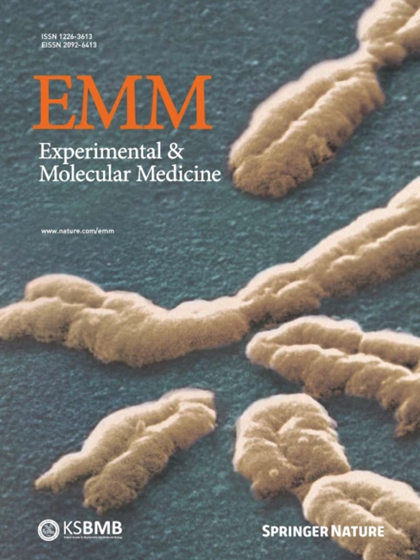DNA repair and disease: insights from the human DNA glycosylase NEIL family
IF 9.5
2区 医学
Q1 BIOCHEMISTRY & MOLECULAR BIOLOGY
引用次数: 0
Abstract
The base excision repair pathway protects DNA from base damage via oxidation, deamination, alkylation and methylation. DNA glycosylases are key enzymes that recognize damaged bases in a lesion-specific manner and initiate the base excision repair process. Among these, the endonuclease VIII-like 1–3 (NEIL1–3) family, which is found in mammalian genomes, is a homolog of bacterial DNA glycosylases known as Fpg/Nei. NEIL enzymes have similar structures and substrates but with slight differences. When repair proteins are impaired, the accumulation of damaged bases can lead to increased genomic instability, which is implicated in various pathologies, including cancer and neurodegeneration. Notably, mutations in these proteins also influence a range of other diseases and inflammation. This review focuses on the influence of the NEIL family on human health across different organ systems. Investigating the relationship between NEIL mutations and diseases can improve our understanding of how these enzymes affect the human body. This information is crucial for understanding the basic mechanisms of DNA repair and enabling the development of novel inhibitors or gene therapies that target only these enzymes. Understanding the role of the NEIL family provides insights into novel therapies and improves our ability to combat genetic diseases. The base excision repair pathway is crucial for fixing DNA damage, including oxidative base lesions, and maintaining genetic stability. This article reviews the role of NEIL enzymes, which are part of the base excision repair pathway, in various diseases. NEIL enzymes help to repair damaged DNA by removing faulty bases caused by oxidative or alkylation damage. The study highlights the diverse roles of NEIL1, NEIL2 and NEIL3 enzymes in various organ systems and diseases. The researchers found that NEIL1 is broadly associated with the nervous and cardiovascular systems, and uniquely affects the integumentary system and liver, while the functions of NEIL2 are primarily concentrated in the immune and respiratory systems and are specifically associated with bacterial infections of the stomach and large intestine. NEIL3 is linked to the cardiovascular and immune systems, but unlike other NEILs, it shows no independent organ-specific effects. This review also shows that these enzymes play roles in brain health, immune response and skin protection. These findings suggest that understanding NEIL enzymes can lead to better treatments for diseases related to DNA damage by enabling targeted therapies, such as small-molecule modulators, and guiding research to enhance DNA repair in specific diseases. This summary was initially drafted using artificial intelligence, then revised and fact-checked by the author.

DNA 修复与疾病:人类 DNA 糖基化酶 NEIL 家族的启示。
碱基切除修复途径通过氧化、脱胺、烷基化和甲基化保护DNA免受碱基损伤。DNA糖基酶是识别损伤碱基并启动碱基切除修复过程的关键酶。其中,在哺乳动物基因组中发现的内切酶VIII-like 1-3 (NEIL1-3)家族是细菌DNA糖基酶Fpg/Nei的同源物。NEIL酶具有相似的结构和底物,但略有不同。当修复蛋白受损时,受损碱基的积累可导致基因组不稳定性增加,这与各种病理有关,包括癌症和神经变性。值得注意的是,这些蛋白质的突变也会影响一系列其他疾病和炎症。本文综述了NEIL家族在不同器官系统中对人体健康的影响。研究NEIL突变和疾病之间的关系可以提高我们对这些酶如何影响人体的理解。这些信息对于理解DNA修复的基本机制以及开发仅针对这些酶的新型抑制剂或基因疗法至关重要。了解NEIL家族的作用可以为新疗法提供见解,并提高我们对抗遗传疾病的能力。
本文章由计算机程序翻译,如有差异,请以英文原文为准。
求助全文
约1分钟内获得全文
求助全文
来源期刊

Experimental and Molecular Medicine
医学-生化与分子生物学
CiteScore
19.50
自引率
0.80%
发文量
166
审稿时长
3 months
期刊介绍:
Experimental & Molecular Medicine (EMM) stands as Korea's pioneering biochemistry journal, established in 1964 and rejuvenated in 1996 as an Open Access, fully peer-reviewed international journal. Dedicated to advancing translational research and showcasing recent breakthroughs in the biomedical realm, EMM invites submissions encompassing genetic, molecular, and cellular studies of human physiology and diseases. Emphasizing the correlation between experimental and translational research and enhanced clinical benefits, the journal actively encourages contributions employing specific molecular tools. Welcoming studies that bridge basic discoveries with clinical relevance, alongside articles demonstrating clear in vivo significance and novelty, Experimental & Molecular Medicine proudly serves as an open-access, online-only repository of cutting-edge medical research.
 求助内容:
求助内容: 应助结果提醒方式:
应助结果提醒方式:


